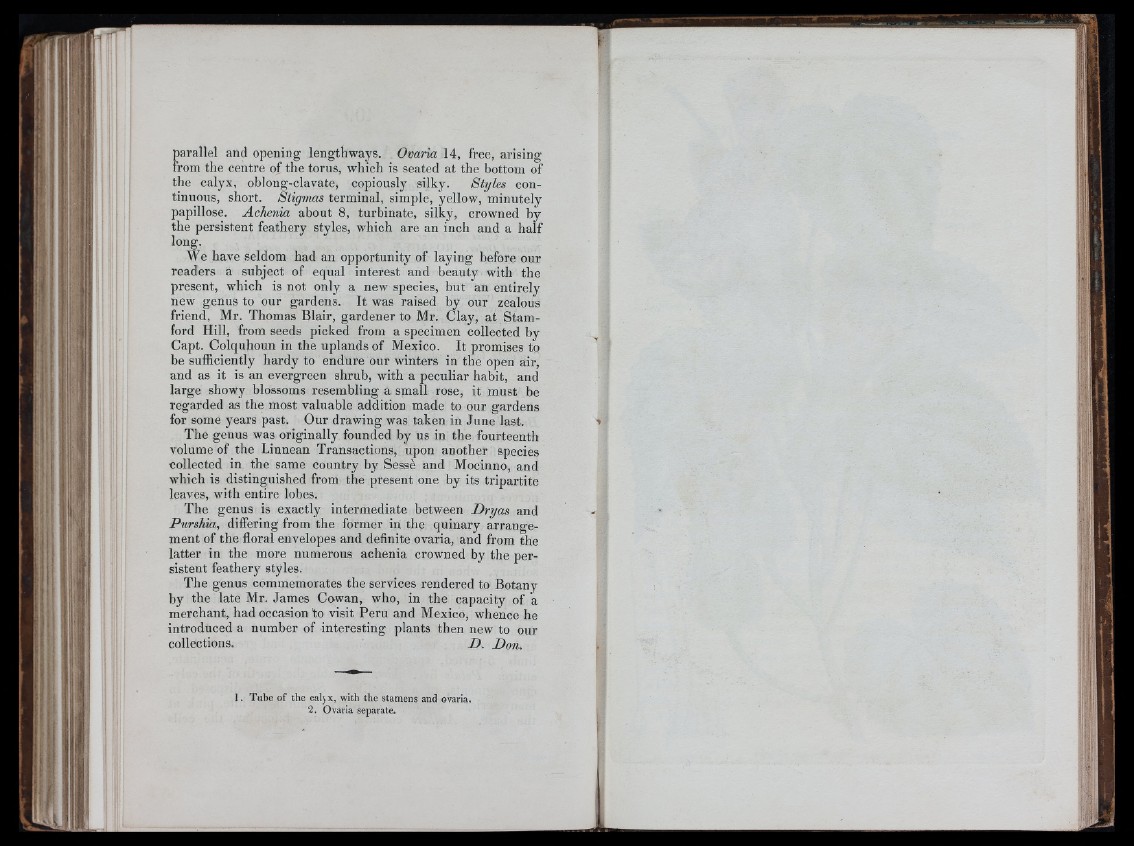
j:1Íi4l|í
jarallel and opening lengthways. Ovaria 14, free, arising
rom the centre of the torus, which is seated at the bottom of
the calyx, oblong-clavate, copiously silky. Styles continuous,
short. Stigmas terminal, simple, yellow, "minutely
papillose. Achenia about 8, turbinate, silky, crowned b
long.
We have seldom had an opportunity of laying before our
readers a subject of equal interest and beauty with the
present, which is not only a new species, but an entirely
new genus to our gardens. It was raised by our zealous
friend, Mr. Thomas Blair, gardener to Mr. Clay, at Stamford
ilky,by
the persistent feathery styles, which are an inch and a half
Hill, from seeds picked from a specimen collected by
Capt. Colquhoun in the uplands of Mexico. It promises to
be sufficiently hardy to endure our winters in the open air,
and as it is an evergreen shrub, with a peculiar habit, and
large showy blossoms resembling a small rose, it must be
regarded as the most valuable addition made to our gardens
for some years past. Our drawing was taken in June last.
The genus was originally founded by us in the fourteenth
volume of the Linnean Transactions, upon another species
collected in the same country by Sessè and Mocinno, and
which is distinguished from the present one by its tripartite
leaves, with entire lobes.
The genus is exactly intermediate between Dryas and
Purshia, differing from the former in the quinary arrangement
of the floral envelopes and definite ovaria, and from the
latter in the more numerous achenia crowned by the persistent
feathery styles.
The genus commemorates the services rendered to Botany
by the late Mr. James Co-wan, who, in the capacity of a
merchant, had occasion to visit Peru and Mexico, whence he
introduced a number of interesting plants then new to our
collections. Z>. Don.
1. Tube of the caljx, with the stamens and ovaria.
2, Ovaria separate.